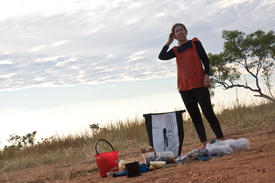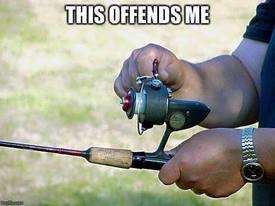We are pleased to announce that on March 4, 2025, an updated Rich Text Editor will be introduced in the MyFitnessPal Community. To learn more about the upcoming changes, please click here. We look forward to sharing this new feature with you!
Brown vs. White Rice - What's the Difference?!
Replies
-
Glycemic Index is the reason. Brown rice is like 50/100 while White is 90/100. It's the speed at which it's absorbed which spikes your blood sugar. And how much you get out of it. I mean, cardboard has calories and burns in the same test equipment but your body sure doesn't get those calories out of it.
It's one of the biggest problems with food labeling - it's not wrong, it's just not right either. And no one has a better solution. We need an "usable calories" measurement.
Mostly this difference applies to people with Diabetes, Pre-Diabetes, or who are predisposed to Diabetes. Something similar can be said about white vs brown breads and pastas. For people who don't need to care when their blood sugar spikes, it's probably no big deal. There are more nutrients in the whole wheat versions, but it doesn't mean the white versions are empty. There's also the view (I'm not sure if it's true or not) that whole grains keep you full longer compared to the refined counterparts. All I know is I'm hungry after a cup of white pasta or white rice, but a 1/2 cup of brown rice feels like more in my stomach. This also could be because it's less tasty and I eat it slower. Not sure.
Its not just relevant to diabetics. Its relevant to all of us and you are right that low GI foods or less processed foods do keep you satisfied for longer. It matters particularly when you are cutting calories to get maxiumum bang for your buck out of food when in a calorie deficit. So the less processed your food, the less likely you will suffer with hunger and break your diet.
That said, you do not need to restrict yourself to brown rice or brown pasta. Actually white pasta isn't too bad at all but you can increase its satiety by making sure you include plenty of vegetables in the dish. The reason i say this is because durm wheat pasta has quite a high protein content. Compare the protein content of white rice with white pasta and white bread. White pasta is quite nutritious. And when i'm on my cycling tours, i find 100g of white pasta keeps me going really well till my next meal. In fact, on some tours i eat spaghetti for lunch and dinner. That said, i often ate it with a can of tuna, olive oil, parmesan cheese. But often wihtout tuna as well. And over a period of two months of eating that much pasta, i can tell you its one of my absolute favourite foods and will not hear a bad word said about it.
If you eat too much pasta, the problem maybe what else you are putting on it. If you just put a pile of cream and a ton of cheese, well, you could better. Try adding some vegetables. Try leaving out the cream and using less cheese.
These days when i eat spaghetti and i'm not on tour, i might make 80g of pasta with one fried onion, 1/2 cup frozen peas, 2tsp olive oil, ground black pepper. Its great and its huge and it keeps me going.
0 -
Patttience wrote: »DeguelloTex wrote: »
Rice is not a good food for fasting. Its better to stick with protein if you are fasting. Reason being your body will lose less muscle tissue if you eat protein. You need to eat protein to maintain muscle mass.
The point is that GI is silly unless the person is eating only rice and, even then, in a fasted state.
I'm not sure what food is good for fasting, since fasting is the absence of food.0 -
No, not in the context of a balanced meal...LastingChanges wrote: »The glycemic index for white rice is higher than brown rice which means you digest it quickly which means sugar spikes quickly.
0 -
So just eat protein? Really? Once again, diet is overemphasized and training is underemphasized. You need to do resistance training to preserve muscle mass. Yes you need protein, but to suggest that rice is not a good fasting food (not even sure what that means) is silly. Get adequate protein (the amount is up for debate) and do resistance training to preserve muscle mass when dieting, period...Patttience wrote: »DeguelloTex wrote: »
Rice is not a good food for fasting. Its better to stick with protein if you are fasting. Reason being your body will lose less muscle tissue if you eat protein. You need to eat protein to maintain muscle mass.0 -
+1DeguelloTex wrote: »Patttience wrote: »DeguelloTex wrote: »
Rice is not a good food for fasting. Its better to stick with protein if you are fasting. Reason being your body will lose less muscle tissue if you eat protein. You need to eat protein to maintain muscle mass.
The point is that GI is silly unless the person is eating only rice and, even then, in a fasted state.
I'm not sure what food is good for fasting, since fasting is the absence of food.
0 -
Patttience wrote: »TrickyDisco wrote: »Brown rice has more fibre and protein than white. Takes a bit longer to cook on the hob but I prefer the taste and texture of brown basmati rice, is great with a little black wild rice added too, though I think wild rice is actually a seed but has lovely nutty taste. I add 25g wild rice to 100g brown basmati for stir-fries, curries, chilli etc.
wild Rice is rice and they are all grains. You could look up the difference between seeds and grains.
It's a grass (which makes it a grain as the term is traditionally used, apparently). It's not a rice, but is related to rice.
From wiki on grains and cereals: "In botany, grains and cereals are synonymous with caryopses, the fruits of the grass family. In agronomy and commerce, seeds or fruits from other plant families are called grains if they resemble caryopses. For example, amaranth is sold as "grain amaranth", and amaranth products may be described as "whole grains". The pre-Hispanic civilizations of the Andes had grain-based food systems but, at the higher elevations, none of the grains was a cereal. All three grains native to the Andes (kaniwa, kiwicha, and quinoa) are broad-leafed plants rather than grasses such as corn, rice, and wheat."
And from the article on wild rice: "Wild rice (also called Canada rice, Indian rice, and water oats) are four species of grasses forming the genus Zizania, and the grain that can be harvested from them. The grain was historically gathered and eaten in both North America and China. While it is now a delicacy in North America, the grain is eaten less in China, where the plant's stem is used as a vegetable.
Wild rice is not directly related to Asian rice (Oryza sativa), whose wild progenitors are O. rufipogon and O. nivara, although they are close cousins, sharing the tribe Oryzeae."
(The article on rice states: "Rice is the seed of the grass species Oryza sativa (Asian rice) or Oryza glaberrima (African rice).")
More here: http://www.wisegeek.org/what-is-wild-rice.htm#didyouknowout and here: http://healthyeating.sfgate.com/nutrients-white-vs-wild-rice-2639.html
0 -
Glycemic Index is the reason. Brown rice is like 50/100 while White is 90/100. It's the speed at which it's absorbed which spikes your blood sugar. And how much you get out of it. I mean, cardboard has calories and burns in the same test equipment but your body sure doesn't get those calories out of it.
It's one of the biggest problems with food labeling - it's not wrong, it's just not right either. And no one has a better solution. We need an "usable calories" measurement.
Food calories aren't determined purely by bomb calorimetry burning the food. That's a common misconception.
If it was true, protein would have ~5.7 calories / gram, but taking into account usable energy, protein works out to ~4 calories / gram.0 -
If diet and fitness were equivalent to all the steps necessary to hit a successful golf shot, this nutritional "difference" would be right up there with what color underwear to choose to hit the shot.0
This discussion has been closed.
Categories
- All Categories
- 1.4M Health, Wellness and Goals
- 391.5K Introduce Yourself
- 43.5K Getting Started
- 259.7K Health and Weight Loss
- 176.1K Food and Nutrition
- 47.5K Recipes
- 232.7K Fitness and Exercise
- 391 Sleep, Mindfulness and Overall Wellness
- 6.5K Goal: Maintaining Weight
- 8.5K Goal: Gaining Weight and Body Building
- 153.1K Motivation and Support
- 7.8K Challenges
- 1.3K Debate Club
- 96.3K Chit-Chat
- 2.5K Fun and Games
- 4K MyFitnessPal Information
- 22 News and Announcements
- 926 Feature Suggestions and Ideas
- 2.3K MyFitnessPal Tech Support Questions




